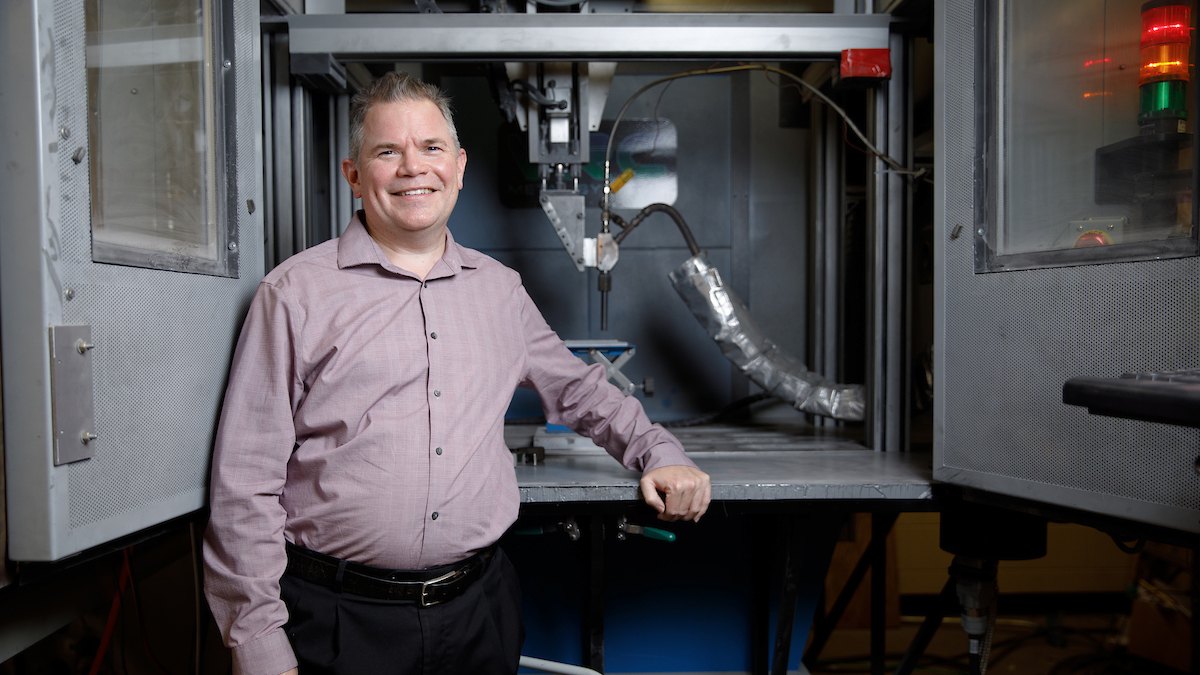
Engineering researchers at The University of Alabama are working to improve a novel process to turn leftover corn scraps into biofuel for jet engines as part of a $3.8 million grant from the United States Department of Energy.
The designers of the process and a critical machine used to grind the corn leftovers, or stover, turned to UA metallurgical and mechanical engineers with expertise in mechanics to help clear a significant hurdle to scale up the process, paving the way to produce commercially viable jet biofuel.
“This is a great example of pure engineering being used to come up with solutions that benefit the nation,” said Dr. Luke Brewer, associate professor of metallurgical and materials engineering. “Our graduate and undergraduate students will get experience working across disciplines and see how their work influences other areas of technology.”
At UA, Brewer is working with Dr. Keivan Davami, assistant professor of mechanical engineering, and Dr. Mark Barkey, professor and head of the UA Department of Aerospace Engineering and Mechanics.
They are part of a grant to UA from the DOE Office of Energy Efficiency and Renewable Energy that includes the National Renewable Energy Laboratory and General Comminution Incorporated in Toronto, Canada.
GCI invented and sells the Szego Mill, a machine that crushes and grinds organic material into fine particles using special steel, helical rollers. Developed about 30 years ago, the Szego Mill’s proprietary roller technology has a high specific capacity while using low energy.
Scientists at the NREL innovated a process that uses the Szego Mill to transform corn stover, the leaves, cobb and stalk – everything except the corn kernels – from the corn plant into a chemical state that readies it for preparation into fuel. The deacetylation and mechanical refining process uses the rolling mill and chemical reactions to wring as much of the building blocks for the fuel, sugar, from the corn stover as possible. When using the Szego Mill to mash the corn stover, the process yields 10 percent more sugar.
“This is a great example of pure engineering being used to come up with solutions that benefit the nation.”
However, the process needs to scale to produce industrial-sized quantities, and the current Szego Mills are too small to eat through the amount of corn stover needed. For successful scale-up, engineers need higher reliability and designs optimized for grinding biomass. These improvements demand better materials and mechanical design in the rolling mill.
UA researchers will study different types of steels that will perform better and last longer. The team will also see if cold sprayed metallic coatings and laser peening surface treatments on top of the steel rollers will help with wear and tear, and will use computer modeling of mechanical loading to further refine the choice of materials.
“We can help them find a better steel because we know which steels will perform better for certain configurations of the mill,” Brewer said.
The four-year project will support a postdoctoral researcher and two doctorate students while enabling undergraduate researchers to participate, including a current senior design project.
